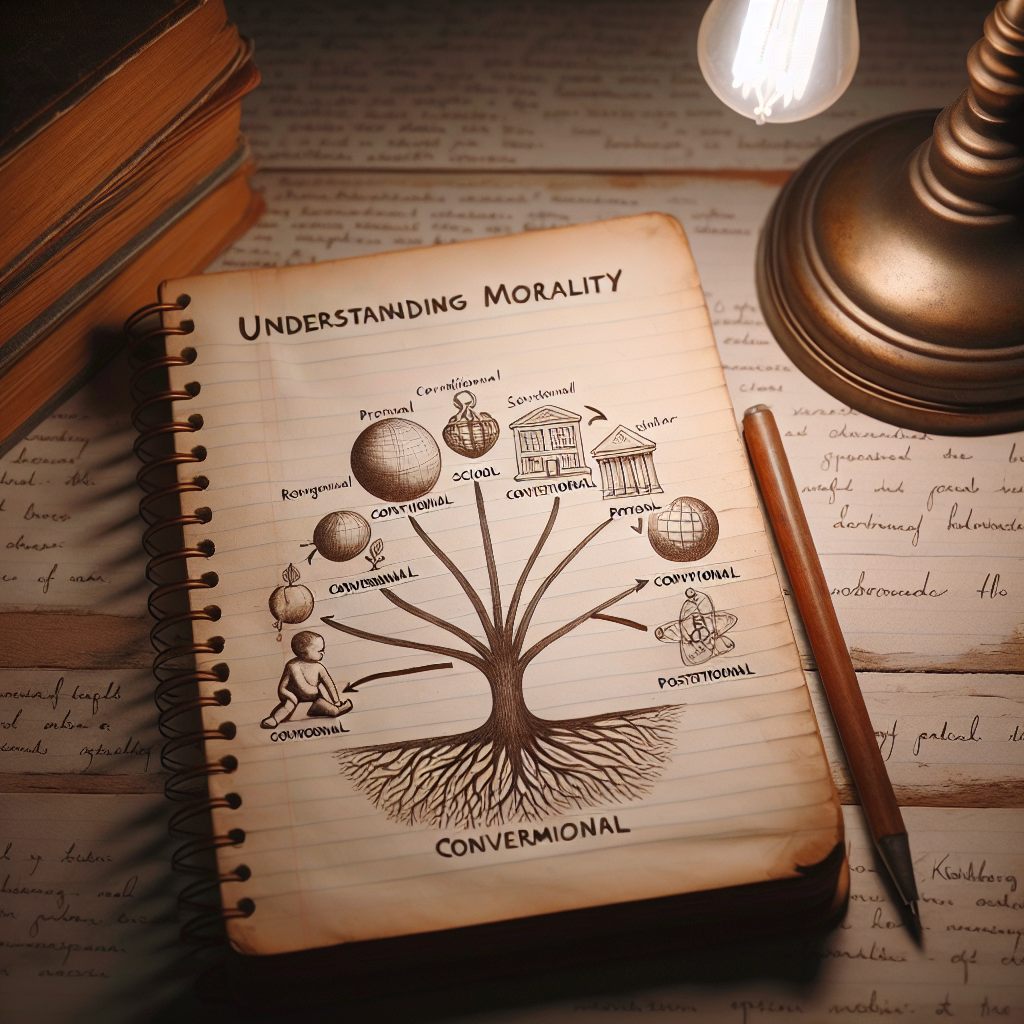Introduction
In an ever-evolving world filled with moral dilemmas, understanding morality is more crucial than ever. From personal decisions to societal laws, our moral compass guides our choices and shapes our relationships. This guide, Understanding Morality: Exploring Kohlberg’s Stages of Development, delves into a framework that has influenced both psychology and ethical theory for decades—Lawrence Kohlberg’s Stages of Moral Development. By navigating through this complex landscape, we aim to illuminate the paths of moral reasoning and showcase their real-world applications.
The Foundation of Kohlberg’s Theory
A Brief Overview
Kohlberg, an American psychologist, proposed a stage theory of moral development in the 1950s and 60s, inspired by Jean Piaget’s work on cognitive development. His theory suggests that moral reasoning evolves through distinct stages, which can affect behavior and decision-making. This framework is pivotal for psychologists, educators, parents, and anyone interested in moral education.
The Three Levels of Kohlberg’s Stages
Kohlberg segmented moral development into three broad levels:
- Preconventional Morality: Focused on self-interest and external consequences.
- Conventional Morality: Centers on societal norms and the approval of others.
- Postconventional Morality: Involves abstract reasoning and universal ethical principles.
Each level is further divided into two stages, creating a comprehensive model for understanding morality.
Diving Deeper: Kohlberg’s Six Stages of Moral Development
Preconventional Morality
-
Stage 1: Obedience and Punishment Orientation
At this stage, a child’s moral reasoning is based on avoiding punishment. The belief is that actions are wrong if they lead to punishment.
Case Study: A child in a classroom may choose not to cheat during a test simply to avoid being caught and punished.
-
Stage 2: Individualism and Exchange
Here, children recognize that different people have different viewpoints and that there is an exchange of favors involved in human interactions.
Case Study: A child might share toys in hopes of receiving a toy back in return.
Conventional Morality
-
Stage 3: Good Interpersonal Relationships
Morality is tied to social approval. Actions are deemed right if they maintain relationships and impress others.
Case Study: A teenager may discourage a friend from skipping school to maintain their image as a "good" friend.
-
Stage 4: Maintaining Social Order
At this stage, individuals consider societal laws and rules critical for maintaining order.
Case Study: An adult paying taxes despite personal dissatisfaction reflects a commitment to societal responsibilities.
Postconventional Morality
-
Stage 5: Social Contract and Individual Rights
Here, the belief is that while laws are important, they must also reflect the greatest good for the greatest number.
Case Study: A community protests against an unjust law, advocating for personal rights and societal good.
-
Stage 6: Universal Principles
This stage involves adherence to universal ethical principles, such as justice and equality, regardless of the laws and rules.
Case Study: A whistleblower exposing unethical practices within a corporation illustrates commitment to moral principles over self-preservation.
Applying Kohlberg’s Theory to Real Life
Understanding Kohlberg’s stages of moral development can have profound implications for various fields including education, business ethics, and psychology. Here’s how:
Education
Teachers can use Kohlberg’s framework to develop curriculum that promotes moral reasoning, encouraging students to engage in ethical discussions relevant to their lives.
Business Ethics
In the corporate world, understanding morality through Kohlberg’s lens can inform ethical leadership and corporate social responsibility. For instance, companies that prioritize ethical practices tend to achieve long-term success.
Psychology
Therapists can leverage these stages to understand the moral reasoning of their clients, tailoring interventions to foster moral development.
Charting the Stages: A Visual Representation
| Stage | Level | Characteristics |
|---|---|---|
| 1 | Preconventional | Avoidance of punishment |
| 2 | Preconventional | Individual benefit; exchange |
| 3 | Conventional | Social approval; interpersonal relationships |
| 4 | Conventional | Respect for authority; maintenance of order |
| 5 | Postconventional | Social contract; rights of others |
| 6 | Postconventional | Adherence to universal ethical principles |
Real-World Challenges and Implications
With the rising complexity of global challenges—climate change, social justice, and inequalities—understanding morality through Kohlberg’s stages can guide informed decision-making. For instance, leaders who embrace postconventional morality are better equipped to tackle these multidimensional issues since they prioritize justice over simply adhering to existing laws.
Conclusion: The Journey Towards Moral Understanding
As this exploration of Understanding Morality: Exploring Kohlberg’s Stages of Development has shown, morality is not a fixed state but a dynamic journey. Recognizing the stages can lead to more informed decisions, compassionate interactions, and transformative societal change. As individuals, it’s important to reflect on our moral stances and understand that growth is not only possible but necessary for a just society.
FAQs
1. What are the implications of Kohlberg’s theory in modern society?
Kohlberg’s stages offer a framework for understanding and addressing moral dilemmas in various fields, enhancing ethical discussions and decisions.
2. How do I apply Kohlberg’s stages in parenting?
Parents can foster moral development by discussing ethical dilemmas and encouraging children to reflect on their values at different stages.
3. Can adults regress in their moral development?
Yes, various life experiences and societal pressures can cause individuals to exhibit behaviors aligned with lower stages of moral reasoning at times.
4. Is moral reasoning fixed across cultures?
While the stages provide a useful framework, cultural contexts can influence moral reasoning, emphasizing some values over others.
5. What resources are available for further study on Kohlberg’s theory?
Relevant literature includes textbooks on developmental psychology, academic journals, and resources from institutions focusing on moral education and ethics.
With this exploration, we hope you feel inspired to delve deeper into the world of moral reasoning, applying insights from Kohlberg’s model to navigate the ethical landscape of life. Understanding morality isn’t just an academic endeavor; it’s a pathway to becoming a more empathetic and responsible individual in a multifaceted world.

